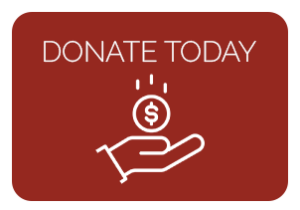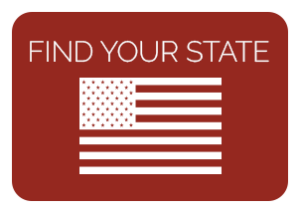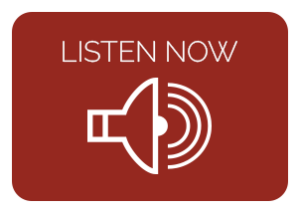This is My Land
Summary
- Subject(s): History of Jamestown and Plymouth settlements in North America 5.1.2, 5.1.4 and 5.2.5, 5.1.7, 5.1.6
- Topic or Unit of Study: Social Studies, US History
- Grade/Level: 5th Grade
- Objective: Unravel the factual history from the American mythology surrounding the founding of the first permanent British settlement up to what is considered the inspiration for the Thanksgiving holiday.
- Time Allotment: 3 Class Periods
Pro Educator Tip: A note on language. The preferred term for American Indians is simply “American Indian.” “Native American” didn’t come about until the 1960s and 70s, around the same time as “African American” and “Asian American.” Many American Indians explicitly rejected the new label, viewing it as an attempt by white Americans to erase their identity. That said, it has gained more acceptance over the decades and you should be fine using either term, interchangeably.
Implementation
Learning Context:
Many historians have identified “myths” surrounding the foundation of the first successful British settlement at Jamestown and the Pilgrims’ landing at Plymouth, leading to what is considered the inspiration for the Thanksgiving holiday. This lesson seeks to unravel those myths from the true history
Pro Educator Tip: This may be a difficult lesson for some of your learners because it will challenge a lot of things they have learned from popular media sources. If this comes up, be prepared to let them know that TV shows, movies, and books often embellish the facts of what actually happened in an effort to tell better stories. Let them know your objective is to teach the real history.
Procedure:
-
Anticipatory Set:
To begin this lesson you will let your class know that much of what they think they know about the founding of the first successful British settlement at Jamestown, the Pilgrims’ landing at Plymouth, and the Thanksgiving holiday are actually modern myths. Try to get them excited to learn the real history behind these American myths. You will also need to ensure that you have some Post-it notes and, you might need some tape depending on how well your Post-its stick to your board.
-
Direct Instruction:
Read or paraphrase this lecture:
You might remember the mystery of Roanoke, where an entire colony vanished. Jamestown, founded in the spring of 1607, almost shared the same fate. The British settlers arrived in what is now Virginia, choosing land abandoned by the Powhatan [pronunciation] Confederacy because it was deemed worthless for agriculture, especially during one of the worst droughts in a thousand years. Two out of every three colonists didn’t survive the first year.
John Smith was supposed to be executed for mutiny upon arrival but was instead made a leader due to sealed orders from the Virginia Company. However, in 1609, an accidental gunpowder explosion left him injured, forcing him to return to England and stay there.
After Smith’s departure, the winter of 1609 became known as “The Starving Time.” Only 60 of the remaining 500 settlers survived to see the spring of 1610. When a new governor arrived that year, he immediately declared war on the Powhatan Confederacy. This First Anglo-Powhatan War lasted from August 1610 to March 1614. During the conflict, the British captured Pocahontas, who converted to Christianity while held prisoner. Eventually, she was used as a hostage to broker peace, marrying settler John Rolfe at age 18 while he was 29. In 1616, Pocahontas was taken to England on a PR tour to promote settlement in the Americas and demonstrate how easily Native Americans could be converted to Christianity. (There is a portrait of Pocahontas from during this tour in the Instructional Materials) (Pocahontas died in England in 1617 as they were preparing to return to Jamestown, but you don’t need to tell your learners this unless they ask)
In March 1622, the Powhatan launched the Second Anglo-Powhatan War, trying to drive the settlers out of their lands. Although the initial attack cost Jamestown 350 lives, the colony survived, marking the beginning of our nation’s ongoing 400 years of conflict with Native Americans.
Pro Educator Tip: Your learners likely think they know the history of Jamestown due to the Disney movie. This lesson is designed to tell them the real history of how this nation’s first settlement really got started, but, to keep the famous characters they likely have heard of involved in the narrative.
-
Guided Practice:
Draw a scale on the board from 1 to 10 with tick marks at 3, 5, and 7. Give your learners a post-it note and ask them to stick it to the board corresponding to how well they think they know the story of the Pilgrims landing at Plymouth.
-
Direct Instruction:
Read or paraphrase this lecture: Epidemics of smallpox, typhus, influenza, diphtheria, and measles swept the Americas subsequent to European contact. It is estimated that up to 95% of American Indians were killed by disease. In fact, one such epidemic hit New England coastal Indian communities in 1616, just prior to the arrival of the Mayflower. The Mayflower set out from Southampton, England on July 26. You have all heard of the Mayflower, landing with the Pilgrims, well I have an exercise for us all.
This is called “Higher/Lower.” I need [pick a student] to say a number. Don’t do it yet. I will tell you when. When [student] says the number I want you all to either point to the ceiling *point REAL BIG to the ceiling * or point to the floor *point REAL BIG to the floor.*
[This activity should get your learners moving a bit.]
Okay, so the question is: There were 132 people on the Mayflower, 30 of them were crew leaving 102 passengers. How many of those 102 people were pilgrims?
[The answer is 37. After your learners guess, correct them as necessary “No, it is actually lower.” or “Just a bit higher.” and then have another learner guess a new number either higher or lower as appropriate until you arrive at 37.]
On November 9, 1620, the Mayflower spotted land and realized that they were approximately 200 miles north of their intended destination on the Hudson River. You see, the Mayflower set out, not as a voyage to the Americas to flee religious persecution (they had been living in Holand before that and were running out of money because they had difficulty finding employment in a foreign country. Also, they didn’t want their children to grow up Dutch.), but instead to try to capitalize on the profit to be made hunting and skinning bevers and selling the pelts back in England as well as the large timber supply located in North America. They tried to sail south, but they were blocked and had to land in Cape Cod in what is now Massachusetts. Well, several of the non-pilgrims (remember they outnumbered the pilgrims almost 2 to 1) decided that because they were so far outside of their legal charter they should be released from their service. We will talk more about indentured servitude later this semester, but suffice it to say, that almost everyone on board who wasn’t crew had entered into a contract of indentured servitude. Several of the non-pilgrims saw this blunder as a way for them to achieve freedom. Specifically, they claimed they would “would use their own liberty; for none had power to command them.” (This is a direct quote from William Bradford one of the Pilgrims and signatory of the Mayflower Compact. A link to the primary source is located in the instructional materials section. It is on page 207 and now is a good opportunity to pull up this page and show the class the fact that we still have all of these documents.)
To prevent the group from breaking apart (and thus a loss of profit and security for the Pilgrims, as they represented a group) they convinced the captain and a few of the other non-pilgrim men to sign onto a new agreement. This is what is known as “The Mayflower Compact.” They agreed to submit and be obedient to the will of the majority in the group, for the greater good, rather than allow for any individuals to achieve individual liberty. In both the first and last sentences they refer to themselves as “loyal subjects” of King James (the king of England at the time.) So, it should be obvious that they did not consider themselves separatists, nor did they consider themselves to be “fleeing” the rule of King James.
(An image of a plaque of the compact is in the instructional materials. The original compact has been lost, but several people wrote about it.
-
Check for Understanding:
Have your learners break into groups of 3-4. Ask them to write down what myths about the pilgrims they had previously and what they expect that we will cover tomorrow. Tell them, that tomorrow, you will be discussing the event that is considered the inspiration for the Thanksgiving holiday. Have them each write their name and date on these sheets and pass them in after 5-7 minutes of work. You will be handing these back out as part of the lesson tomorrow.
-
Direct Instruction:
Start off by asking your learners if they enjoy Thanksgiving. Then you can ask them what their favorite parts are. When you receive a couple of answers you can say, wow, I am surprised none of you said anything about the traditional Thanksgiving deer. And follow up with: “Okay, I am kidding a bit, but today we are going to finish our discussion about Thanksgiving and the PIlgrims and learn the real history that inspired our modern holiday.” Then read or paraphrase this lecture:
Initially, when the Pilgrims got off of the Mayflower they saw evidence of extreme depopulation (remember because of the illness.) They attributed it to the “good hand of God … that he might make room for us there.” Yes, that is correct, when they found evidence of the massive death of Indians, including entire villages, they thanked God that he had killed the Indians to make room for his “chosen people.” The Pilgrims sent out scouts to try to find edible plants, animals, or Indians, but, they found nothing but abandoned villages. So, the Pilgrims raided the supplies of these villages and stole what food they could find so they could survive the winter of 1620.
All of the individuals worked through the winter building their first structure for shelter on land. They even worked on Christmas Day.
Ask your learners what they think about this. You might say something like “We know the Puritans were very religious, why don’t you think they prioritized Christmas?”
The correct answer is that Christmas was a “Mass.” Mass (even Christmas) was an evil, Catholic, practice that only heretics would celebrate. In fact, just a few years later when they got around to writing their own, local, laws they banned the Class Period 3 cont.: f. Direct Instruction cont.: celebration of Christmas. By their logic, if God meant for people to celebrate holidays like Christmas or Easter they would be mentioned in The Bible.
After a brutal winter, spring came, and the remaining settlers met some local Indians. The first was Samoset, an Abenaki (pronunciation) Indian who told the settlers that they had settled in Wampanoag (pronunciation) lands. Samoset told the settlers that the ruler of this area was “Chief Massasoit.” (pronunciation) This man’s real name was Ousamequin, (pronunciation) but the British settlers confused his title with his name and a LOT of histories get this detail wrong. Ousamequin and Governor William Bradford (remember him from earlier) made a pact and part of their deal was that an Indian named Tisquantum (pronunciation) (Again, a LOT of histories call this man by the wrong name “Squanto” but his name was Tisquantum.) would remain in the settlement to show the settlers how to survive. Tisquantum showed the pilgrims some farming techniques, and the deal gave them access to fields that had been abandoned due to the epidemic of 1616- 1619. Finally, we get to the fall harvest in 1621. You may be expecting me to give you a primary source and an exact date, but, unfortunately, the meal was so unremarkable that only one person wrote about it at all, and it was in a letter that may have been written weeks after the event.
Part of the description is here, but the entire letter is linked in the suggested resources below.
He wrote: “[A]fter we had gathered the fruit of our labors; they four in one day killed as much fowl, as with a little help beside, served the company almost a week, at which time amongst other recreations, we exercised our arms, many of the Indians coming amongst us, and among the rest their greatest King Massasoit, with some ninety men, whom for three days we entertained and feasted, and they went out and killed five deer, which they brought to the plantation and bestowed on our governor, and upon the captain, and others.”
An important line here is “we exercised our arms.” You see, according to The Wampanoags, they were not invited. Instead, they showed up after they heard the settlers shooting their muskets into the air for fun. The Wampanogas thought that they needed to aid the settlers. The Wampanoags provided five deer while they were there, and the celebration lasted three days. There were birds (though it is unclear if any turkeys were eaten,) fish, eel, corn, shellfish, and possibly cranberries from the area’s natural bogs. They did not have potatoes, pasta, cheese, (so no Mac and Cheese), or pies.
-
Check for Understanding:
Have your learners break into groups of 3-4. Hand them back their sheets from yesterday. Ask them to discuss if they cleared up any additional myths. Give your learners about 5 minutes to discuss and take notes. Now, ask them to turn over their sheets and list their top 5 myths about the pilgrims and the first Thanksgiving. Tell them you will be grading this, so they need to make sure that they have their name and date at the top of this sheet.
-
Closing:
If you have a word of the week, this may be a good time to work it in. Otherwise, try to work this section into the next section, likely either the three sisters farming or, Roger Williams and Anne Hutchinson.
Class Period 1:
Class Period 2:
Pro Educator Tip: The images above can be projected while you lecture to allow your learners something that is not very distracting to look at. You know learners and only do this if you think it will enhance the lesson.
Class Period 3:
Differentiated Instructions
Pro Educator Tip:Recognize that learners exhibit diverse learning modalities. You can employ a range of pedagogical strategies to effectively engage and instruct a heterogeneous student body by deliberately considering this variability.
- Visual Learners
- Auditory Learners
- Kinesthetic Learners – The Higher/lower game should really help your kinesthetic learners.
- ESL Students
- At-risk Students
- Advanced Learners – This may be an excellent lesson for your Advanced students to dive in. Allow them to have fun in the discussion.
Materials and Resources
Pro Educator Tip: Choose supplementary materials that will enhance your lesson (books or videos), YOU KNOW YOUR LEARNERS! Find resources that ENHANCE this lesson and make your instruction an engaging learning experience for all of your learners! Also, ensure that any supplemental materials obtain any necessary clearance from district staff before showing or presenting them to your learners. Your curriculum team works hard preparing and vetting materials.
-
Instructional Materials:
- ❑ Portrait of Pocahontas in England
- ❑ Bradford’s history “Of Plimoth plantation”: from the original manuscript
- ❑ Text of the Compact from the base of the Pilgrim Monument, Provincetown,
MA
-
Suggested Resources:
- ❑ Thomas Morton, Description of the Indians in New England (1637)
- ❑ Massachusetts Law Banning Christmas
- ❑ Letter of Edward Winslow, 11 December 1621
- ❑ This tribe helped the Pilgrims survive for their first Thanksgiving. They still
regret it 400 years later.
Facts and Faith:
Biblically Responsible Lessons For Diverse Classrooms
Crafted by a dedicated team of expert educators and
ministers from diverse Christian denominations, these
lesson plans by Defense of Democracy are designed to meet
Oklahoma Academic Standards and Superintendent Walters’
OSDE Instructional Support Guidelines for Teachers
directive. Our mission is to promote inclusivity and ensure
emotional and physical safety for all students. These
rigorous, Bible-based lessons reflect our commitment to
historically and scientifically accurate education, fostering
shared experiences across all backgrounds.




